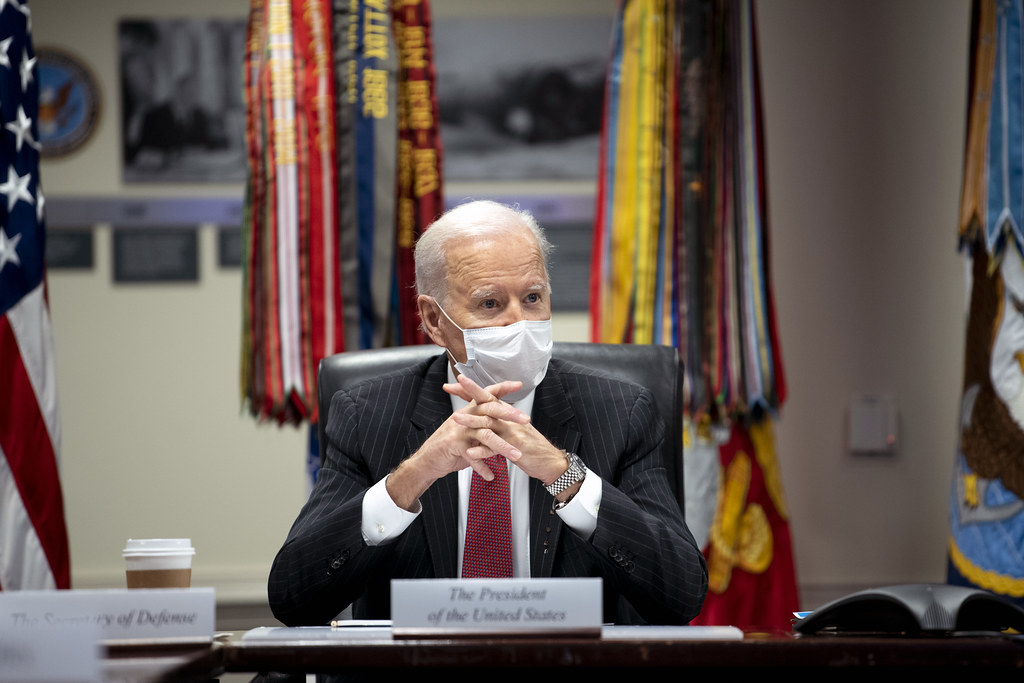2030年減碳目標呼之欲出 拜登訂422地球日舉辦線上氣候峰會
美國邀集各國首腦出席峰會 確保氣候工作持續推進
拜登邀請了中國國家主席習近平和俄羅斯總理普丁參加首腦會議。白宮表示,儘管兩國在其他幾個議題上關係緊張,但拜登政府仍希望與俄羅斯和中國在氣候變遷方面進行合作。
美國是僅次於中國的世界第二大溫室氣體排放國,印度排名第三,俄羅斯則是世界第四大溫室氣體排放國。
就職第一天就使美國重返《巴黎協定》的拜登,在峰會上將強調積極氣候行動的急迫性和經濟利益。這次峰會將是11月1日至12日格拉斯哥聯合國氣候變遷會議(第26屆締約方大會,COP26)前的一個重要里程碑。
近年科學家們不斷強調地球升溫控制在1.5°C內、避免氣候變遷嚴重後果的必要性。峰會和COP26的主要目標都是推動氣候行動工作,以確保1.5°C目標能達標。
領導人峰會另一個重點是介紹增加氣候積極度創造高薪工作、推進創新技術並幫助脆弱國家適應氣候變遷的例子。
拋磚引玉 美國將提出2030年新減碳目標
在峰會召開之前,美國將宣佈白宮的「2030年積極減排目標」,也就是美國依據《巴黎協定》所提的國家自主貢獻。
拜登在邀請函中呼籲世界各國領導人利用此次會議,說明其國家將如何加強氣候行動。
會議將重新召集美國主導的主要經濟體能源和氣候論壇(Major Economies Forum on Energy and Climate)參與者。該論壇召集了17個國家,約佔全球排放量和全球GDP的80%。
拜登還邀請了其他展現出強大氣候領導力、特別容易受氣候變遷影響,或是正在設法實現淨零經濟的國家領袖。少數企業和民間社會領導人也將參加。
會議的主題將包括:
一、刺激世界主要經濟體在這關鍵十年內積極減排,讓升溫控制在1.5°C內成為可能。
二、調動公共和私營部門的資金來推動零淨轉型,並幫助脆弱國家因應氣候影響。
三、氣候行動的經濟利益,尤其是創造就業機會,以及確保所有社區和勞工從轉型過程中受益。
四、推動轉型技術的發展,這些技術可以幫助減少排放並適應氣候變遷,同時創造了巨大的新經濟機會並打造未來產業。
五、表揚致力於綠色振興和限制升溫1.5°C的地方和非國家行為者,並與各國政府緊密合作以提高積極度和抵禦力。
六、討論增加保護生命和生計不受氣候變遷影響的機會,因應氣候變遷帶來的全球安全挑戰以及如何預防和準備,並探討自然解決方案如何能協助達成2050年淨零排放。
President Joe Biden has invited 40 world leaders to participate in a virtual Leaders Summit on Climate he will host on Earth Day April 22 and on the following day April 23, fulfilling a promise he made during his first week in office. The virtual Leaders Summit will be live-streamed for public viewing.
The President invited President Xi Jinping of China and President Vladimir Putin of Russia to take part in the summit. The White House has said the Biden administration would like to cooperate with Russia and China on climate change in spite of tensions between the countries in several other areas.
The United States is the world’s second-largest emitter of greenhouse gases, behind China. India is third and Russia is the world’s fourth-largest greenhouse gas emitter.
President Biden took action his first day in office to return the United States to the Paris Agreement. The Leaders Summit on Climate will underscore the urgency, and the economic benefits, of stronger climate action. It will be a key milestone on the road to the annual United Nations Climate Change Conference (COP26) to be held November 1-12 in Glasgow, Scotland.
In recent years, scientists have underscored the need to limit planetary warming to 1.5 degrees Celsius above the temperature at the start of the Industrial Revolution in order to avert the worst impacts of climate change. A key goal of both the Leaders Summit and COP26 will be to catalyze efforts that keep that 1.5-degree goal within reach.
The Leaders Summit will also highlight examples of how enhanced climate ambition will create good-paying jobs, advance innovative technologies, and help vulnerable countries adapt to climate impacts.
By the time of the Summit, the United States will announce what the White House calls “an ambitious 2030 emissions target” as its new Nationally Determined Contribution under the Paris Agreement.
In his invitation, President Biden urged world leaders to use the Summit as an opportunity to outline how their countries will contribute to stronger climate ambition.
The Summit will reconvene the U.S.-led Major Economies Forum on Energy and Climate, which brings together 17 countries responsible for approximately 80 percent of global emissions and global GDP.
The President also invited the heads of other countries that are demonstrating strong climate leadership, are especially vulnerable to climate impacts, or are charting innovative pathways to a net-zero economy. A small number of business leaders and civil society leaders will also participate in the Summit.
Key themes of the Summit will include:
* – Galvanizing efforts by the world’s major economies to reduce emissions during this critical decade to keep a limit to warming of 1.5 degree Celsius within reach.
* – Mobilizing public and private sector finance to drive the net-zero transition and to help vulnerable countries cope with climate impacts.
* – The economic benefits of climate action, with a strong emphasis on job creation, and the importance of ensuring all communities and workers benefit from the transition to a new clean energy economy.
* – Spurring transformational technologies that can help reduce emissions and adapt to climate change, while also creating enormous new economic opportunities and building the industries of the future.
* – Showcasing subnational and non-state actors that are committed to green recovery and an equitable vision for limiting warming to 1.5 degree Celsius, and are working closely with national governments to advance ambition and resilience.
* – Discussing opportunities to strengthen capacity to protect lives and livelihoods from the impacts of climate change, address the global security challenges posed by climate change and the impact on readiness, and address the role of nature-based solutions in achieving net-zero by 2050.








